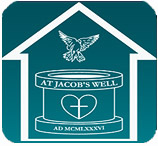Television, it must be conceded, has conferred benefits on society, but along with the good has come an abundance of bad. And one of its most serious bits of mischief seems to have gone largely unnoticed: It has considerably shrunk the average American’s attention span.
Parsons are probably more acutely aware of the phenomenon than most people. Three decades ago a congregation would have felt shortchanged with a sermon lasting less than 20 minutes. Today, the folks in the pews start fidgeting after a bare 10 minutes.
In short, the average American’s foreshortened attention span appears to correlate directly with the amount of time between the advertisements that punctuate television programs.
If our currency inflated at the same rate as our attention spans, the dollar would be worth only half of its value in 1980. (Come to think of it, that is all it is worth, but we can’t blame TV commercials for that.)
Some observers argue that commercial breaks are a boon. They enable viewers to grab a cup of coffee, a snack, or visit the bathroom without missing a second of their favorite soap.
But, from a socio-economic perspective, one is forced to wonder whether the effect of the phenomenon on other aspects of life—education, commerce, government, personal relationships and, yes, worship—are quite as benign.
For the past 30 years, virtually all of the nation’s churches have been wrestling with the problem of the shrinking American attention span. Non-liturgical churches have sought a solution by incorporating elements of pop culture in their services.
Pews have been replaced by cinema seating. Traditional hymnody has given way to rock’n’roll. Sermons have morphed into Power Point presentations, often with sound effects, light shows, and on-stage fireworks. Some preachers have even adapted their services to the TV talk show format.
The response of American evangelicals to this sort of change has been largely positive. But while it is hard to argue with success, it is not a model that can be easily followed by liturgical churches.
Shortening sermons is easy enough. Here at St Stephen’s, we have been doing so for the past couple of decades. Arguably, sermons have improved as a consequence.
Accommodating the contemporary culture to the same extent as the non-liturgical churches, however, is a horse of quite a different color. Not least, rock’n’roll, Power Point presentations, sound effects, and the TV talk show format are hardly conducive to the contemplative spirituality the traditional liturgy is intended to inspire.
The traditional Anglican liturgies, moreover, are intended to present worshippers with eternal theological truths. Simplifying these liturgies risks diluting those truths—distorting some and deleting others. What’s more, simplified liturgies tend to sound just a teeny bit silly.
Even so, for the past decade or so, we have noticed not only inquirers, but also the occasional parishioner, remarking on the “wordiness” of the 1928 Eucharist. Perhaps this should not have surprised us. After all, by the year 2000, two decades had passed since the abandonment of the 1928 Book of Common Prayer and the liturgy that had been in use since the early years of the 19th Century.
Few Episcopalians under the age of 50 are familiar with traditional liturgy. Even fewer are acquainted with Morning and Evening Prayer. The Daily Offices fell into disuse in most “progressive” Episcopal parishes during the early 1960s.
Unfamiliarity with the 1928 liturgies presents traditionalist parishes like our own with something of a problem: How are we to we satisfy the demands of a younger generation for a more succinct liturgy, while remaining true to the vision of our founders?
St Stephen’s is unique among traditionalist parishes in that it was founded in 1982 by the Baltimore Chapter of the Prayer Book Society of the Episcopal Church. Its express mission is to preserve the liturgy and theology of the traditional Book of Common Prayer.
In an effort to satisfy demands for a more succinct liturgy, we explored “updated” versions of traditional rites, including one developed by the late Rev. Dr. Peter Toon, a former president of the Prayer Book Society.
None, however, fitted the bill. Even Dr. Toon’s liturgy seemed “clunky” beside the original—lacking the cadences and internal rhythms of its prose.
This was hardly surprising. It was not so long ago that Thomas Cranmer’s Book of Common Prayer, the King James Bible, and William Shakespeare’s works were held up throughout the world as the apotheosis of English literary excellence.
The solution to our problem presented itself during an 8:00 AM Eucharist at St. Alban’s Anglican Church in Copenhagen, Denmark, in the summer of the year 2001. The rite in use at the service was that of the 1662 edition of the Book of Common Prayer.
The structure of the 1662 Rite is simple, straightforward, and economical. The 1928 Eucharist, by contrast, tends to be complex, prolix, and repetitive—incorporating both of the long post–communion thanksgiving prayers designated as alternatives in the 1662 Rite.
It is, moreover, more logical in structure than the 1928 Rite. The Prayer of Humble Access, for example, precedes the Prayer of Consecration. In the 1928 Rite, it precedes the distribution of consecrated elements.
While neither position is “wrong” per se, Cranmer’s placement of the Prayer of Humble Access is preferable because it emphasizes that, because of our sinful nature, we are not even worthy to celebrate the Eucharist, let alone receive Christ’s Body and Blood.
In any event, the 1662 Rite is between 10 to 15 minutes shorter than the 1928 version. Brevity in worship is not necessarily a virtue. But the verbal economy and logical order of the 1662 make it more accessible to newcomers while sacrificing none of the essentials to beloved of traditionalists. GPH✠



Leave a Reply